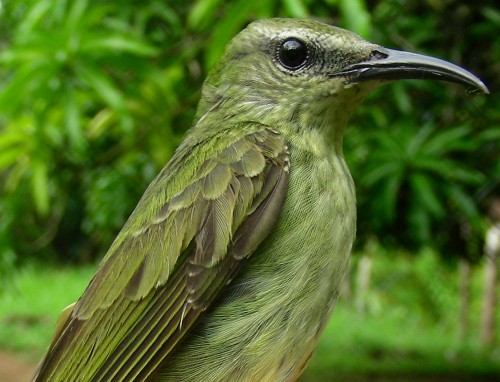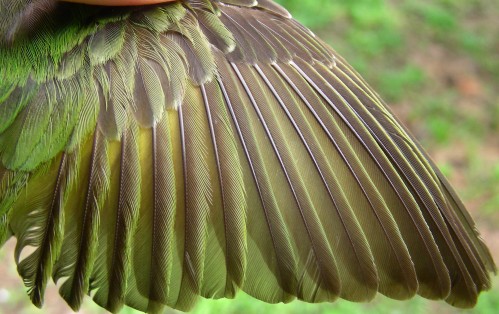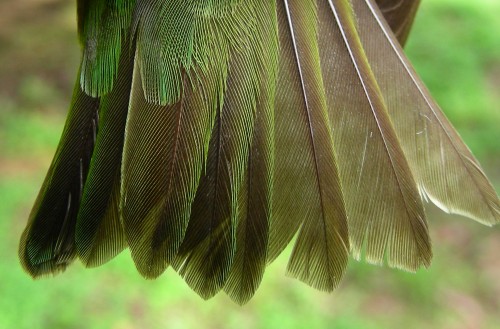SPRING: AHY-F (after-hatch-year female) |
Female Red-legged Honeycreepers have a very different appearance from males, generally grayish-green, and with some streaking on a relatively pale breast.

Photo by Marcel Gahbauer, Las Caletas (CR),
April 2008
The wing may be useful in separating SY from ASY Red-legged Honeycreepers. It appears in this case that the inner greater coverts have been replaced, contrasting with the outer coverts, that have a small white tip, as do some of the primary coverts and the alula covert. It may be that these are traits typical of juvenile feathers, indicating that this is a SY female, but more study is needed.

Photo by Marcel Gahbauer, Las Caletas (CR),
April 2008
The rectrices of this individual appear relatively broad, which in many species would suggest an ASY bird, but there also appear to be uniform growth bars across at least the outer three rectrices, which is more typical of juvenile feathers grown in the nest, suggesting the age may be SY; not enough is known about the plumage and moult patterns of this species to know which interpretation is more likely to be correct.

Photo by Marcel Gahbauer, Las Caletas (CR),
April 2008
RETURN TO AGE/SEX
OVERVIEW